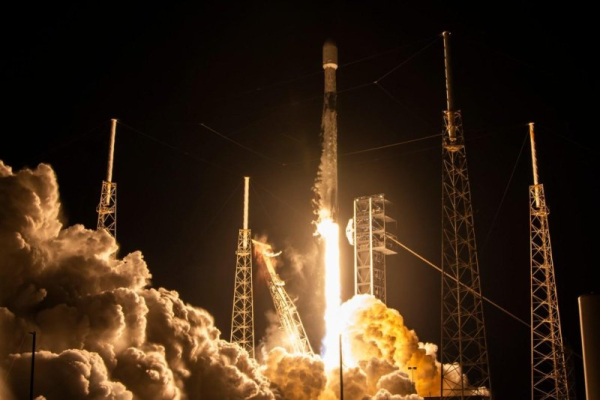
(Image credit: VLADIMIR BOLGAR/SCIENCE PHOTO LIBRARY via Getty Images)
Solar-powered laser beams are one step closer to becoming a reality, thanks to funding received to develop a unique technology. These lasers could eventually support the energy needs of lunar bases and Mars missions, as well as contribute to sustainable energy solutions on the planet, scientists say.
In June, an international research team announced it had received a grant of about €4 million ($1.2 million) from the European Innovation Council and Innovate UK to develop solar laser technology inspired by photosynthetic microorganisms.
“In our group, we think a lot about artificial light harvesting and what we can learn from nature,” Eric Gauger, a quantum theorist at Heriot-Watt University in Scotland who is involved in the project, told Live Science. “If it’s possible in nature, we should be able to apply similar mechanisms to artificial systems.”
Sunlight-powered lasers are not a new idea—the first was demonstrated in 1963, just three years after the first laser was created. However, regular sunlight is too dilute to power a laser efficiently. Sunlight lasers typically require complex, powerful optics to amplify sunlight by at least a thousand times. The mass of these components makes them difficult to transport into space.
To overcome these challenges, Gauger and his team will turn to bacteria that live in the darkness of the deep ocean. These microorganisms have incredibly sensitive light-harvesting structures that can capture almost every photon they encounter. These systems allow the bacteria to photosynthesize even in very low light. By extracting these light-harvesting structures and reproducing them in the lab, the team hopes to concentrate enough sunlight to power a laser, Gauger says.
Providing energy for lunar bases and interplanetary missions
He and his colleagues imagined how such a system might work in a 2021 paper. In the proposed system, structures capture sunlight, then direct it into a solid material, such as a crystal. Electrons in the atoms of that material absorb the light's energy, then release it as laser light.
With the new grant, the team aims to develop new laser materials that can interact with the photosynthetic structures of bacteria.
Once up and running, the laser system could help power satellites, lunar bases, and even missions to Mars, the authors say. Because laser beams remain narrow and focused over long distances, they could transmit energy to distant systems. For example, a solar laser mounted on a space station could power it or send it to a nearby satellite or even to Earth. At the receiving site, the energy from the laser light could then be converted into heat or electricity.
Solar lasers could also help advance the transition to renewable energy on Earth, Goger said.
“They could, for example, help split water, control chemical processes, synthesize fertilizers, and support processes that require significant amounts of energy that we currently produce, including that derived from fossil fuels,” Gauger said. “They won’t solve all our problems at once, but they could play a small role in the transition to clean, sustainable energy.”
The team plans to create a prototype laser within the next three years.
Sourse: www.livescience.com





